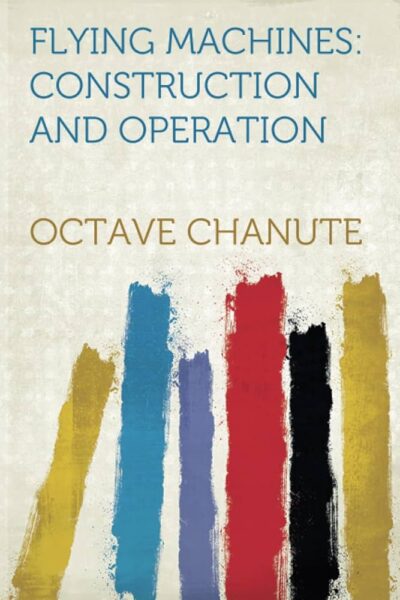32 Results with the "Practical" genre
Adventure Fiction (1164)
Biography (435)
Business & Finance (1)
Children's Literature (124)
Comics (6)
Culture (51)
Drama (123)
Dystopian (29)
Fable (86)
Fantasy (1132)
Fantasy (203)
Fiction (1010)
Finance (1)
Gothic Fiction (12)
Historical Fiction (615)
History (122)
Horror (56)
Lifestyle (36)
Literary (404)
Literary Fiction (207)
Memoir (113)
Mystery (422)
Non-fiction (87)
Novel (549)
Paranormal Fiction (96)
Philosophical (182)
Philosophy (45)
Poetry (249)
Political Fiction (14)
Politics (42)
Psychological (4)
Psychological Thriller (108)
Relationship (6)
Romance Novel (716)
Romantic Melodrama (14)
Satire (91)
Science (46)
Science Fiction (345)
Self-help (68)
Society (65)
Society (2)
Spiritual Growth (1)
story (2)
Thriller (704)
True Crime (56)
view (11)
Women's Fiction (2)
Young Adult (233)
-
Chapter
VERSE: Light and Shade
 Light and Shade begins by recognizing the quiet strength in those who carry both joy and pain without complaint. Life is not a straight path of constant brightness, nor is it always shadowed. Instead, it unfolds in shifting tones—sunlight filtered through passing clouds. The poem invites readers to see this interplay not as confusion, but as richness. By embracing contrast, we learn how to feel more deeply, connect more honestly, and live more fully. What comforts one day may not work the next, yet that,…
Light and Shade begins by recognizing the quiet strength in those who carry both joy and pain without complaint. Life is not a straight path of constant brightness, nor is it always shadowed. Instead, it unfolds in shifting tones—sunlight filtered through passing clouds. The poem invites readers to see this interplay not as confusion, but as richness. By embracing contrast, we learn how to feel more deeply, connect more honestly, and live more fully. What comforts one day may not work the next, yet that,…-
56.4 K • Ongoing
-
-
Chapter
Aviation Development
 Aviation Development during 1911 reflects a year of groundbreaking progress, where innovation and daring merged to shape the future of flight. This chapter offers a detailed look at how records in speed, distance, duration, and altitude were achieved by aviators across both Europe and America. These achievements are not only categorized by their nature but also distinguished by whether pilots flew solo or carried passengers. The scope of progress wasn’t isolated—it was global. Pilots pushed their…
Aviation Development during 1911 reflects a year of groundbreaking progress, where innovation and daring merged to shape the future of flight. This chapter offers a detailed look at how records in speed, distance, duration, and altitude were achieved by aviators across both Europe and America. These achievements are not only categorized by their nature but also distinguished by whether pilots flew solo or carried passengers. The scope of progress wasn’t isolated—it was global. Pilots pushed their…-
142.7 K • Ongoing
-
-
 Notable Cross-Country Flights of 1911 brought aviation to the forefront of technological and human achievement, as pilots tested not just machines but their own endurance across vast landscapes. One of the year’s most dramatic highlights was Orville Wright’s flight at Killdevil Hills, where he remained aloft for over ten minutes despite strong winds. This feat demonstrated the increasing control and stability of powered flight. While Wright’s contribution remained largely experimental, many aviators…
Notable Cross-Country Flights of 1911 brought aviation to the forefront of technological and human achievement, as pilots tested not just machines but their own endurance across vast landscapes. One of the year’s most dramatic highlights was Orville Wright’s flight at Killdevil Hills, where he remained aloft for over ten minutes despite strong winds. This feat demonstrated the increasing control and stability of powered flight. While Wright’s contribution remained largely experimental, many aviators…-
142.7 K • Ongoing
-
-
 Aeroplanes and Dirigible Balloons in Warfare marks a period when aerial innovation began reshaping both public imagination and military doctrine. The chapter opens with highlights from two high-profile races that reflect not only mechanical progress but also public fascination with the speed and capabilities of early aircraft. L. Beachey’s journey from New York to Philadelphia in a Curtiss machine demonstrated impressive consistency at 45 miles per hour. Meanwhile, E. Ovington’s triumph in a…
Aeroplanes and Dirigible Balloons in Warfare marks a period when aerial innovation began reshaping both public imagination and military doctrine. The chapter opens with highlights from two high-profile races that reflect not only mechanical progress but also public fascination with the speed and capabilities of early aircraft. L. Beachey’s journey from New York to Philadelphia in a Curtiss machine demonstrated impressive consistency at 45 miles per hour. Meanwhile, E. Ovington’s triumph in a…-
142.7 K • Ongoing
-
-
 Flying Machines: Construction and Operation is a 1908 book by the aviation pioneer, William J. Hammer. It provides detailed instructions on building and operating early flying machines, covering the principles of flight, materials, and design. The book reflects the early 20th century's fascination with flight and offers insights into the development of aviation technology.
Flying Machines: Construction and Operation is a 1908 book by the aviation pioneer, William J. Hammer. It provides detailed instructions on building and operating early flying machines, covering the principles of flight, materials, and design. The book reflects the early 20th century's fascination with flight and offers insights into the development of aviation technology.-
4.7 K • Nov 8, '24
-
4.3 K • Nov 8, '24
-
4.3 K • Nov 8, '24
-
-
 Chapter XXVIII-Flying Machines: Construction and Operation functions as an essential lexicon for anyone seeking clarity in the evolving language of aviation. It begins by introducing foundational terms that outline the scope of aerial engineering, such as “Aerodrome,” described not as a place, but as a mechanical entity intended to operate within the sky’s domain. The entry sets the tone for what follows: a clear, structured breakdown of language specific to flying machine technology. “Aerofoil”…
Chapter XXVIII-Flying Machines: Construction and Operation functions as an essential lexicon for anyone seeking clarity in the evolving language of aviation. It begins by introducing foundational terms that outline the scope of aerial engineering, such as “Aerodrome,” described not as a place, but as a mechanical entity intended to operate within the sky’s domain. The entry sets the tone for what follows: a clear, structured breakdown of language specific to flying machine technology. “Aerofoil”…-
142.7 K • Ongoing
-
-
 Chapter XIX – Flying Machines Construction and Operation dives into the emerging legal complexities brought about by the rise of aviation, a field that, by 1910, had already begun challenging traditional ideas about property, public space, and individual rights. The foundational legal principle discussed here is rooted in ancient common law: landowners possess not only the soil beneath their feet but also the sky above their property—extending indefinitely. Legal authorities such as Blackstone and Coke…
Chapter XIX – Flying Machines Construction and Operation dives into the emerging legal complexities brought about by the rise of aviation, a field that, by 1910, had already begun challenging traditional ideas about property, public space, and individual rights. The foundational legal principle discussed here is rooted in ancient common law: landowners possess not only the soil beneath their feet but also the sky above their property—extending indefinitely. Legal authorities such as Blackstone and Coke…-
142.7 K • Ongoing
-
-
 Chapter XX – Flying Machines Construction and Operation begins with a compelling observation: large birds can glide effortlessly for extended periods without a single wingbeat, even when flying into the wind. This graceful motion has long puzzled scientists and spectators, appearing almost to defy gravity. The phenomenon, sometimes described as "negative gravity," has prompted significant curiosity about how such efficient, sustained flight is possible. In response, early aeronautical pioneers looked to…
Chapter XX – Flying Machines Construction and Operation begins with a compelling observation: large birds can glide effortlessly for extended periods without a single wingbeat, even when flying into the wind. This graceful motion has long puzzled scientists and spectators, appearing almost to defy gravity. The phenomenon, sometimes described as "negative gravity," has prompted significant curiosity about how such efficient, sustained flight is possible. In response, early aeronautical pioneers looked to…-
142.7 K • Ongoing
-
-
 Chapter XXI - Flying Machines Construction And Operation provides a thorough comparison between dirigible balloons and early flying machines, focusing on their design efficiency, cost of operation, and potential for widespread use. At the time, dirigibles were impressive in size and endurance but were burdened with considerable financial and technical challenges. Constructing one, particularly models like the Zeppelin, demanded investments well over $100,000—a massive sum for that era. This financial…
Chapter XXI - Flying Machines Construction And Operation provides a thorough comparison between dirigible balloons and early flying machines, focusing on their design efficiency, cost of operation, and potential for widespread use. At the time, dirigibles were impressive in size and endurance but were burdened with considerable financial and technical challenges. Constructing one, particularly models like the Zeppelin, demanded investments well over $100,000—a massive sum for that era. This financial…-
142.7 K • Ongoing
-
-
 Chapter XXII - Flying Machines Construction And Operation brings forward the insights of F. W. Lanchester, whose lecture to the Royal Society of Arts offered a technical and visionary take on aerial navigation. Rather than viewing flight as purely theoretical, he firmly positioned it within the realm of locomotive engineering, emphasizing performance over possibility. He challenged the viability of vertical flight, especially the helicopter, stating that such machines lacked the energy efficiency necessary…
Chapter XXII - Flying Machines Construction And Operation brings forward the insights of F. W. Lanchester, whose lecture to the Royal Society of Arts offered a technical and visionary take on aerial navigation. Rather than viewing flight as purely theoretical, he firmly positioned it within the realm of locomotive engineering, emphasizing performance over possibility. He challenged the viability of vertical flight, especially the helicopter, stating that such machines lacked the energy efficiency necessary…-
142.7 K • Ongoing
-
- 1 2 … 4 Next
